
| Commissions |
| Events |
| hatfields | armstong/tippett | kalogera | keszler | o'brien | mann |
| marsh | gache | deck | traub | miharbi/priestley |
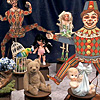
by Ephraim & Sadie Hatfield
with funds from the Jerome Foundation
We Ping Good Things To Life is an ever evolving and expanding interactive networked installation that brings together elements of Toy Theater, Vaudeville performance, Surrealism, and consumer culture. Users can activate dozens of store-bought, found, and donated objects to create a unique performance, alone or with others, via the live streaming video feed. Inspired by the work of friend and artist Jarvis Rockwell, Act 1: Remember When We Used to Have Fun? explores the hidden lives of toys. New acts exploring assemblage, puppetry, and animatronics through themes of patriotism, cabaret, and the circus sideshow will be introduced every three weeks through June 4, 2012. [Needs patience]
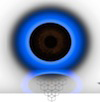
by Kate Armstrong & Michael Tippett, with sound by Thomas Aston
with funds from the National Endowment for the Arts
Space Video addresses ideas of exploration in relation to inner and outer space. Having noticed that there are shared aesthetic qualities of video imagery that accompany disparate cultural and scientific phenomena including guided meditation, hypnosis, undersea and space exploration by NASA, motivational speaking, powerpoint backgrounds, science fiction, psychedelic drug culture, electronic music, popular spirituality, and computer effects, we have built a generative system that mixes an original non-linear narrative with YouTube videos on these subjects as they are uploaded in real time. These videos often attempt to portray what are ultimately non-visual spaces, producing images that are at once placeholders, images of the transcendental, trippy intergalactic stereotypes, and fields for persuasion. [Needs Speakers/Headphones]
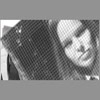
by Maja Kalogera
with funds from the National Endowment for the Arts
Searching for Michelle/SFM is a networked, non-linear narrative. It begins as a search for a lost painting, then loses itself and finds itself once more, exploring ideas drawn from interface design, new media theory and film noir along the way. [Best experienced in Opera and Firefox; also viewable in the newest versions of Safari, Chrome, and Internet Explorer. Needs Speakers/Headphones]
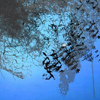
by Eli Keszler
with funds from the Jerome Foundation and the New York City Department of Cultural Affairs
From June 7-23, composer-percussionist Eli Keszler transformed Eyebeam Art & Technology Center's Project Space with L-Carrier, a large-scale, mechanical stringed instrument that immersed audiences in rich harmonies and sparse, multi-directional rhythms. Fluid, dynamic acoustic sounds pushed and pulled against the installation's sonic control. The website displayed the piece's evolving visual data score, and streamed real-time audio from the physical environment. When people went to the website, they activated invisible "targets" distributed around the visual field. As these "targets" intercepted with Eli's drawings the code that controlled the installation was altered which, in turn, changed the percussive patterns of the strings (at Eyebeam). [Needs Safari, Firefox or Chrome; and Speakers/Headphones]
Read a review >>
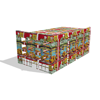
by Nicholas O'Brien
with funds from the National Endowment for the Arts
Memorial Project for Jobbers' Canyon Built with ConAgra Products pays homage to lost architectural treasures. In 1989 ConAgra, the second largest agricultural distributor in the United States, began building its new corporate headquarters in Omaha, Nebraska. In the process, twenty-four buildings over six city blocks were demolished. The district, known as Jobbers' Canyon, was listed in the National Registry of Historic Places and is considered the largest lost site on record. Using preserved records and architectural drawings O'Brien has 'rebuilt' ten of the buildings, substituting the original construction materials with products distributed by ConAgra. [Best viewed in Chrome, Firefox or Safari]
Read an interview >>

by Chris Mann
with funds from the New York City Department of Cultural Affairs
Either/Or performed the world premiere of Public Works at ISSUE Project Room on June 23, 2012.
For any standard instrumentation (string trio or quartet, wind quintet, whatever) playing standard repertoire. Having chosen a piece from repertoire, each player to play other than their usual instrument (first violin to play cello, for example), and play only those notes they deem necessary (because they give the player an opportunity to change their mind, because they make other notes possible, or for some other reason other than their mere existence). Once started, there should be no attempt to synchronise time. [Needs Firefox and Headphones]
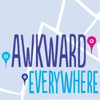
by Zannah Marsh
with funds from the Jerome Foundation
Awkward_NYC/Awkward_Everywhere is a collaborative online map for reporting social accidents and small interpersonal traumas that occur unexpectedly in public spaces. Anyone can add a story to the map. The map pinpoints sites in the New York Metropolitan area or anywhere in the world where misunderstandings, outbursts, physical altercations, arguments between friends or strangers, and romantic spats or break-ups have occurred. It taps into the confessional, voyeuristic, narrative impulses that typify online behavior and subverts the notion of mapping as reductive, objective, and authoritative. As stories are added to the map, a series of data visualizations depicting the emotional terrain of various cities will be generated.

by Belen Gache
with funds from the National Endowment for the Arts
Word Market (WM) is an Internet portal dedicated to buying and selling words, using a unique currency, the ‘Wollar’. In times of increasing privatization of public spaces and the profusion of copyright laws, WM allows you to own, trade and profit from words as their value fluctuates. WM offers you attractive discounts and promotions. Don't hold back! Increase your linguistic wealth. Become the owner of your words! And most importantly, prevent others from using them! [Sign in for a free account]
Read a review >> (in Spanish)

by Andy Deck
with funds from the Jerome Foundation
How does the crow fly? Eager beaver, get on your high horse and take the bull by the horns. Talk turkey or monkey around. Clear up the hogwash contributed by the birdbrains. Make them eat crow. If you know a hawk from a handsaw, or have the memory of an elephant, well then, make a bee line for the website and separate the sheep from the goats until you're dog tired. It's the cat's meow. Crow Sourcing engages collective memory and insight to demystify and reanimate a dizzying array of sayings, idioms, and expressions that will be collected and discussed via Web, mobile, and social media until the end of 2012. The results will then be presented as printed matter. [Participate via Twitter]
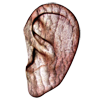
by Peter Traub
with funds from the National Endowment for the Arts
Bringing the body of the tree to the network is a natural fit — a tree is a network too: roots sensing and absorbing nutrients, leaves sensing and photosynthesizing sunlight, and phloem and xylem running throughout to carry nutrients across the structure. WoodEar attempts to merge the dynamic qualities of this biological network with the digital network. A series of sensors attached to the tree stream data on the state of its environment — light, temperature, air pressure, and wind. This live data is merged with photos and recordings of the tree's immediate surroundings into a generative application/ installation. By downloading and running the application, anyone can access the live environmental experiences of the tree — one that may be very distant from them, but that still shares the same air, sun, earth, and sky. [Needs download and Speakers/Headphones]
Panemoticon
by Ali Miharbi and John Priestley
with funds from the National Endowment for the Arts
We know how you feel. Panemoticon observes your behavior, makes a few inferences about your emotional state, and plays music to match your mood. Your mouse/trackpad use says a lot about your energy level, confidence, and perceived control over your environment. Panemoticon tracks and analyzes these data to create an image of your mood, and then generates music, adjusting properties such as tonality (major/minor), harmonic & rhythmic complexity, tempo, timbre, and proximity. Collective mood is calculated for all Panemoticon users on a given site. [Needs Firefox (16 or later recommended), headphones/ speakers, mouse/ trackpad]

by Eli Keszler
with funds from the Jerome Foundation and the New York City Department of Cultural Affairs
Installation: June 7-23 at Eyebeam Art & Technology Center.
Performance: June 7; 7:00 pm at Eyebeam Art & Technology Center. Featured Eli Keszler, Ashley Paul, Anthony Coleman, Alex Waterman, C Spencer Yeh, Catherine Lamb, Geoff Mullen, and Reuben Son.
Co-Commissioned in partnership with Issue Project Room.

by Chris Mann
with funds from the New York City Department of Cultural Affairs
Either/Or performed the world premiere of Public Works at ISSUE Project Room on June 23, 2012. [Needs Firefox and Headphones]
Co-Commissioned in partnership with Issue Project Room.
